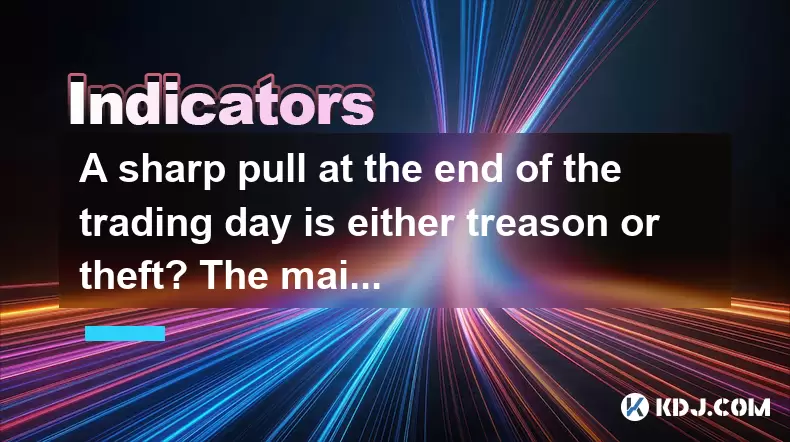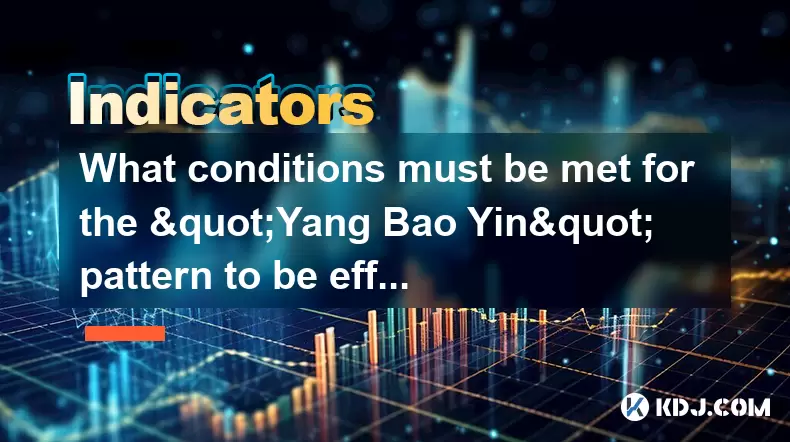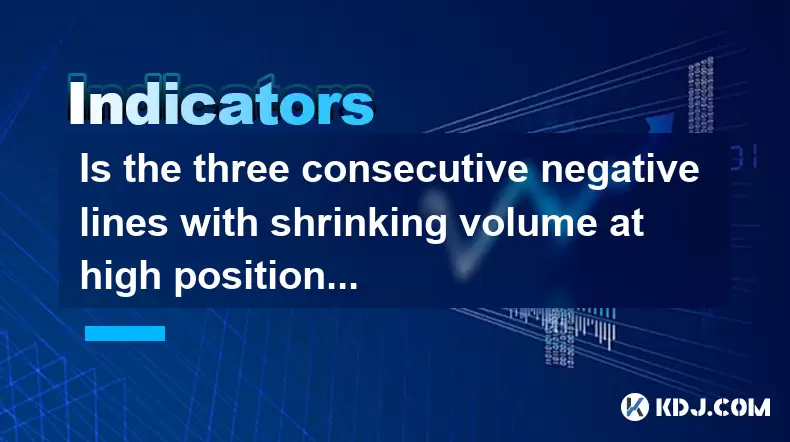-
 Bitcoin
Bitcoin $105,398.5023
1.75% -
 Ethereum
Ethereum $2,555.2076
3.43% -
 Tether USDt
Tether USDt $1.0004
-0.02% -
 XRP
XRP $2.1420
2.09% -
 BNB
BNB $651.8274
1.41% -
 Solana
Solana $146.6120
2.90% -
 USDC
USDC $0.9998
-0.01% -
 Dogecoin
Dogecoin $0.1773
3.19% -
 TRON
TRON $0.2715
0.86% -
 Cardano
Cardano $0.6350
1.86% -
 Hyperliquid
Hyperliquid $41.6576
9.72% -
 Sui
Sui $3.0264
2.34% -
 Bitcoin Cash
Bitcoin Cash $444.9663
11.29% -
 Chainlink
Chainlink $13.2560
2.72% -
 UNUS SED LEO
UNUS SED LEO $9.0324
1.94% -
 Avalanche
Avalanche $19.1824
2.67% -
 Stellar
Stellar $0.2586
1.47% -
 Toncoin
Toncoin $3.0063
2.58% -
 Shiba Inu
Shiba Inu $0.0...01205
4.59% -
 Hedera
Hedera $0.1580
3.52% -
 Litecoin
Litecoin $86.0051
4.95% -
 Polkadot
Polkadot $3.8023
2.34% -
 Ethena USDe
Ethena USDe $1.0005
0.01% -
 Monero
Monero $309.1882
1.96% -
 Dai
Dai $1.0000
0.01% -
 Bitget Token
Bitget Token $4.5486
1.61% -
 Uniswap
Uniswap $7.5266
8.36% -
 Pepe
Pepe $0.0...01113
5.10% -
 Aave
Aave $288.7607
8.66% -
 Pi
Pi $0.5784
4.89%
A sharp pull at the end of the trading day is either treason or theft? The main force often uses these three methods
A sharp pull at the end of the trading day often signals manipulation through spoofing, wash trading, or pump-and-dump schemes, leaving retail traders vulnerable to sudden, artificial price moves.
Jun 13, 2025 at 06:21 am

Understanding the Sharp Pull at the End of the Trading Day
In cryptocurrency trading, a sharp pull at the end of the trading day can be unsettling for retail traders. This phenomenon typically refers to a sudden and significant price movement—either upward or downward—occurring in the final moments of a 24-hour trading period. While some may view it as normal market behavior, others suspect manipulation by large players, often referred to as the main force.
The sharp pull can create confusion among traders who are trying to assess whether the move is genuine or artificial. In markets with high volatility and low regulation like crypto, such moves are not uncommon. Understanding the mechanics behind these movements helps traders distinguish between natural price discovery and potential manipulation.
What Is Meant by “Treason or Theft” in Crypto Context?
When traders say a sharp pull at the end of the trading day feels like treason or theft, they are expressing frustration over what appears to be deliberate manipulation of prices. Treason implies betrayal by insiders or entities that have access to deeper market insights, while theft suggests an unfair extraction of value from unsuspecting traders.
This sentiment is especially strong when positions get liquidated due to last-minute spikes or crashes. For instance, if a trader holds a leveraged long position and the price suddenly drops right before the daily candle closes, their stop-loss might trigger unnecessarily. The phrase reflects the emotional toll such manipulative practices can have on retail participants.
Method #1: Spoofing and Layering
One common tactic used by the main force is spoofing and layering, where large orders are placed and then canceled before execution. These phantom orders create a false impression of supply or demand, tricking other traders into reacting emotionally or mechanically based on misleading data.
- Fake buy walls or sell walls appear on order books.
- Traders place trades expecting support or resistance levels.
- Orders are canceled just before execution, leaving retail traders exposed.
This method exploits the psychological tendency of traders to follow perceived trends. It's particularly effective during low liquidity periods, such as the end of a trading day, when fewer real orders exist to counteract the fake ones.
Method #2: Wash Trading
Wash trading involves a single entity or colluding group buying and selling assets among themselves to inflate volume or manipulate price action. This creates the illusion of market activity and interest where there is none.
- Artificially high trading volumes mislead technical indicators.
- Momentum traders enter positions based on perceived strength.
- Liquidity dries up quickly after the wash trade ends.
This deceptive practice can lead to false breakouts or breakdowns, especially near key timeframes like the close of a daily candle. Retail traders often find themselves caught off guard when the momentum disappears abruptly.
Method #3: Pump and Dump Schemes
Although traditionally associated with altcoins, pump and dump schemes also occur subtly in major cryptocurrencies. A coordinated effort by whales or institutional players pushes the price up rapidly, often near the end of a trading session, before selling off en masse.
- Coordinated social media or private group messages trigger FOMO.
- Retail investors jump in as price surges.
- Main force sells off holdings at inflated prices.
These schemes exploit human psychology and the fast-paced nature of crypto markets. The abrupt reversal at the end of the day can wipe out gains made throughout the session, leaving latecomers holding the bag.
How to Identify Manipulation Tactics at the Close
Recognizing these tactics requires careful observation and analysis of market depth, volume patterns, and candlestick formations. Here are some steps traders can take:
- Monitor order book imbalances – Look for sudden spikes in bids or asks that disappear quickly.
- Check volume anomalies – If volume jumps without corresponding news or catalysts, manipulation might be at play.
- Use multiple timeframes – Zooming in on lower timeframes can reveal spoofed orders or fake breakouts.
- Track whale transactions – On-chain analytics tools can show when large wallets are moving significant amounts of coins.
By staying vigilant and using analytical tools, traders can better protect themselves from being on the wrong side of a manipulated close.
Protecting Yourself from End-of-Day Manipulation
While avoiding manipulation entirely is difficult, there are strategies to mitigate its impact:
- Avoid placing orders blindly near the close – Wait for confirmation or use limit orders instead of market orders.
- Use trailing stops carefully – They can be triggered by temporary spikes created by manipulators.
- Diversify entry points – Don’t rely solely on one timeframe or signal for entering or exiting trades.
- Keep emotions in check – Reacting impulsively to sudden moves can lead to losses.
Adopting a disciplined approach to trading, combined with technical awareness, can significantly reduce exposure to manipulative tactics.
Frequently Asked Questions
Q: How can I differentiate between a genuine price spike and manipulation at the end of the day?
A genuine spike usually coincides with real-time news, increased on-chain activity, or sustained volume. Manipulated moves often lack fundamentals, exhibit erratic order book behavior, and reverse quickly.
Q: Are certain cryptocurrencies more prone to end-of-day manipulation?
Yes, smaller-cap tokens with lower liquidity are easier targets for manipulation. Even large-cap coins like Bitcoin or Ethereum can experience minor manipulation during low-volume periods.
Q: Can exchanges prevent end-of-day price manipulation?
Exchanges can implement measures like anti-spoofing algorithms and transaction monitoring. However, enforcement varies widely, and many platforms still struggle with detecting sophisticated manipulation tactics.
Q: Should I avoid trading near the end of the trading day altogether?
It’s not necessary to avoid trading entirely, but caution is advised. Consider reducing position sizes, using tighter stops, and verifying signals across multiple sources before acting.
Disclaimer:info@kdj.com
The information provided is not trading advice. kdj.com does not assume any responsibility for any investments made based on the information provided in this article. Cryptocurrencies are highly volatile and it is highly recommended that you invest with caution after thorough research!
If you believe that the content used on this website infringes your copyright, please contact us immediately (info@kdj.com) and we will delete it promptly.
- Hyperliquid's HYPE token has reached a new all-time high
- 2025-06-14 11:20:13
- Introduction to Pump.fun Token Launch Progress
- 2025-06-14 11:20:13
- Introduction: The Dawn of Altcoin ETF Summer
- 2025-06-14 11:15:13
- Coinbase vs. Crypto.com - Which exchange is right for you?
- 2025-06-14 11:15:13
- The 50‑day moving average for Dogecoin recently dipped below the 200‑day
- 2025-06-14 11:10:12
- mETH Protocol Integrates with Hong Kong–based OSL to Expand Institutional Access to Liquid Staking
- 2025-06-14 11:10:12
Related knowledge

How to calculate the probability of trend continuation after the MACD column divergence?
Jun 14,2025 at 08:01am
Understanding MACD Column DivergenceThe Moving Average Convergence Divergence (MACD) is a widely used technical indicator in cryptocurrency trading. The MACD column, also known as the histogram, represents the difference between the MACD line and the signal line. When price makes a new high or low but the MACD histogram does not confirm this movement, a...

What are the volume requirements for adjusting the K line in the "rising three methods" pattern?
Jun 14,2025 at 07:50am
Understanding the 'Rising Three Methods' Pattern in Cryptocurrency TradingThe 'rising three methods' pattern is a bullish continuation candlestick formation that traders often use to identify potential upward momentum in cryptocurrency price charts. This pattern typically appears during an uptrend and suggests that the trend is likely to continue after ...

What conditions must be met for the "Yang Bao Yin" pattern to be effective?
Jun 14,2025 at 06:42am
Understanding the 'Yang Bao Yin' Pattern in Cryptocurrency TradingThe Yang Bao Yin pattern is a candlestick formation commonly observed in technical analysis within the cryptocurrency market. This pattern typically signals a potential bullish reversal after a downtrend. However, for this pattern to be effective and reliable, certain conditions must be m...

Is the three consecutive negative lines with shrinking volume at high positions a signal that the main force has finished shipping?
Jun 14,2025 at 09:56am
Understanding the Concept of Three Consecutive Negative LinesIn cryptocurrency trading, three consecutive negative lines refer to a situation where an asset's price chart shows three successive candlesticks with closing prices lower than their opening prices. This pattern typically indicates bearish sentiment in the market. When this occurs at high posi...

Is it an opportunity for the long positive line with large volume to break through the platform and then shrink back?
Jun 14,2025 at 04:42am
Understanding the Long Positive Line with Large VolumeIn technical analysis, a long positive line refers to a candlestick pattern where the closing price is significantly higher than the opening price, often indicating strong buying pressure. When this occurs alongside large volume, it suggests that market participants are actively involved in pushing t...

How to grasp the 60-minute KD oversold + 15-minute bottom divergence?
Jun 14,2025 at 06:15am
Understanding the 60-Minute KD Oversold SignalThe KD indicator, also known as the Stochastic Oscillator, is a momentum oscillator that compares a particular closing price of a cryptocurrency to its price range over a given time period. When analyzing 60-minute charts, traders often look for oversold conditions in the KD line, which typically occur when ...

How to calculate the probability of trend continuation after the MACD column divergence?
Jun 14,2025 at 08:01am
Understanding MACD Column DivergenceThe Moving Average Convergence Divergence (MACD) is a widely used technical indicator in cryptocurrency trading. The MACD column, also known as the histogram, represents the difference between the MACD line and the signal line. When price makes a new high or low but the MACD histogram does not confirm this movement, a...

What are the volume requirements for adjusting the K line in the "rising three methods" pattern?
Jun 14,2025 at 07:50am
Understanding the 'Rising Three Methods' Pattern in Cryptocurrency TradingThe 'rising three methods' pattern is a bullish continuation candlestick formation that traders often use to identify potential upward momentum in cryptocurrency price charts. This pattern typically appears during an uptrend and suggests that the trend is likely to continue after ...

What conditions must be met for the "Yang Bao Yin" pattern to be effective?
Jun 14,2025 at 06:42am
Understanding the 'Yang Bao Yin' Pattern in Cryptocurrency TradingThe Yang Bao Yin pattern is a candlestick formation commonly observed in technical analysis within the cryptocurrency market. This pattern typically signals a potential bullish reversal after a downtrend. However, for this pattern to be effective and reliable, certain conditions must be m...

Is the three consecutive negative lines with shrinking volume at high positions a signal that the main force has finished shipping?
Jun 14,2025 at 09:56am
Understanding the Concept of Three Consecutive Negative LinesIn cryptocurrency trading, three consecutive negative lines refer to a situation where an asset's price chart shows three successive candlesticks with closing prices lower than their opening prices. This pattern typically indicates bearish sentiment in the market. When this occurs at high posi...

Is it an opportunity for the long positive line with large volume to break through the platform and then shrink back?
Jun 14,2025 at 04:42am
Understanding the Long Positive Line with Large VolumeIn technical analysis, a long positive line refers to a candlestick pattern where the closing price is significantly higher than the opening price, often indicating strong buying pressure. When this occurs alongside large volume, it suggests that market participants are actively involved in pushing t...

How to grasp the 60-minute KD oversold + 15-minute bottom divergence?
Jun 14,2025 at 06:15am
Understanding the 60-Minute KD Oversold SignalThe KD indicator, also known as the Stochastic Oscillator, is a momentum oscillator that compares a particular closing price of a cryptocurrency to its price range over a given time period. When analyzing 60-minute charts, traders often look for oversold conditions in the KD line, which typically occur when ...
See all articles

























































































